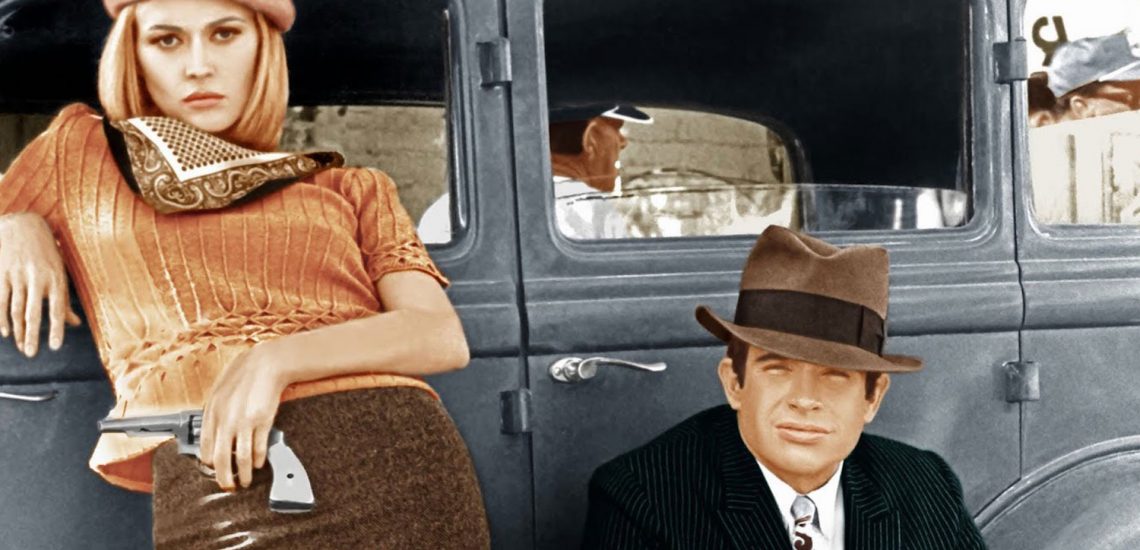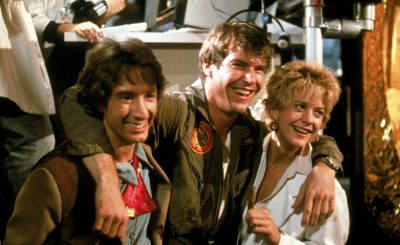The counterculture associated with the 1960s presented a generation of young people with a new wave of popular culture and social standing. A trend of ‘New Hollywood’ films produced in that era, such as Arthur Penn’s Bonnie and Clyde (1967), are testament to this. Penn’s inclusion of European formal techniques, contrary to many of the established conventions of Hollywood films, as well as the issues the film’s narrative deals with, very much reflect the generational shift between the 1950s and 1960s. This textual analysis will look explicitly at Bonnie and Clyde in terms of its technical elements, particularly editing, and assess how these elements merge to create a 1930s story consistent with the rebellious themes of 1960s counterculture.
The form and theme of Bonnie and Clyde naturally didn’t lend itself to all generations living in the era of its release. Indeed, it was considered ‘a critical failure’, and didn’t perform at the box office. The film’s popularity, therefore, was derived from a cult following of young people embracing the period’s countercultural movements (Barrow, 2006, p. 137). Younger filmgoers found appeal in the innovative, European-influenced, low-budget films of the ‘New Hollywood’, and identified with Bonnie and Clyde’s implications towards 1960s hardships, despite its 1930s setting. The literal representation in Bonnie and Clyde is of a generation reacting against 1930s American capitalism, and the anti-heroes associated with this, but the subtext very much reflects the 1960s rebellion in the wake of the Vietnam War and rejection of 1950s values (Gair, 2007, pp. 202-203).
With its main characters described as ‘1960s flower children in 1930s garb’, Bonnie and Clyde very much deals with the anti-establishment concepts associated with the hippie culture of that era (Bernstein, 2000, p. 19). The 1960s saw substantial radical transition and changes of attitude, many of which are reflected within the narrative of the film. In one key scene involving Bonnie, Clyde, farmer Otis Harris and black farmhand Davis, the overall theme of anti-consumerism is displayed with powerful effect. With his farm recently taken over by the bank, Otis displays his, and indeed society’s, contempt by shooting rounds off at the sign reading ‘Property of Midlothian Citizens Bank’. In the same scene, a sense of newly-found racial equality is presented, as Davis is also entrusted with shooting at the farmhouse. When Clyde later reveals that he and Bonnie rob banks, the lack of reaction from Otis very much reflects their ‘anti-hero’ status and public support in preference to the banks.
The character of Bonnie Parker illustrates the concept of changing times further. In an era of second wave feminism, Bonnie is portrayed as a strong, independent woman throughout much of the film, an idea contrary to the stereotypical role of women prior to the 1960s. Key parts of the film that depict this are when Bonnie shows off archetypal ‘male’ characteristics. These being her skills with a gun when shooting at a swinging tyre – skills that are quickly picked up with little tuition from Clyde – as well as her powerful gun and cigar poses when being photographed outside Buck Barrow’s house, and her comfort with laughing at and mocking Clyde for botching one of their bank robbery attempts.
However, in the opening scene of the film, Bonnie is also shown as fractured and insecure, and it is in this that the greatest homage to the French New Wave is paid. The use of lighting, shadows, and mise-en-scène depict Bonnie in this entrapped manner that is consistent with new wave characters (Barrow, p. 139). The use of jump cuts and fragmented editing techniques also directly contradict the standard Hollywood way of filmmaking, and pay a direct tribute to films such as Jean-Luc Godard’s À bout de soufflé (1960), described by Cowie (2006, pp. 61-62) as having an ‘audacious’ editing style. Neupert (2002, p. 213) also refers to this, stating that ‘the overall story structure is chronological, yet has large scene-to-scene gaps that, mirrored by discontinuous jump cuts, leave out some information’. In Bonnie and Clyde, this is represented by the quick pace of the events being shown; the two meet right at the start of the film, have performed their first robbery within the first ten minutes, and are on the run straight away. Throughout the film, there is little explanation as to how the gang plan their next step, so as not to disrupt this quick flow.
Director Arthur Penn and writers David Newman and Robert Benton were keen admirers of French New Wave cinema; as such it became the primary influence behind Bonnie and Clyde, particularly in earlier script drafts (Bernstein, p. 18). However, there are other European formal techniques present. The inclusion of real-life locations in place of artificial sets is very reminiscent of the late 1940s Italian neo-realist movement. Moreover, the use of short, sharp shots and fast-paced editing in both the car chase scenes, and the shoot-out scenes, reflects heavily on 1920s Soviet montage, with Barrow (p. 139) drawing particular comparison with Eisenstein’s Battleship Potemkin (1925). In terms of formal technique, both the imagery and the editing style of these sequences appear to run counter to standard Hollywood practice, whilst Gair (p. 218) describes the inclusion of banjo music as backing to these scenes as a ‘teasing subversive inversion of Hollywood’s conventional approach to killing’. Penn, Newman, and Benton were not only contradicting standard technical practices, they were also introducing a juxtaposition American audiences were not familiar with; one of cold images of murder set to the beat of light-hearted folk music.
Bonnie and Clyde reflected a substantial change in social norms, not only in the era it was set, but also the era it was made. The rebellion against 1950s social values associated with the counterculture is a direct parallel to the film’s 1930s setting, where an equal sense of youth rebellion is present in the wake of the great depression. The technical choices made by Penn and the writers reflect this need for an overhaul of the norm in rejection of all that is Student ID: 425856 4 associated with a bygone era. The young generation of America demanded something daring, fresh, and in keeping with the changing times. It is with the inclusion of aspects of French New Wave, Italian Neo-Realism, and Soviet Montage, that this was achieved in Bonnie and Clyde.
Bibliography:
Barrow, S. (2009). Bonnie and Clyde. In J. White, & S. Haenni (Eds.), Fifty Key American Films (pp. 137-142). New York: Routledge.
Bernstein, M. (2000). Perfecting the New Gangster: Writing Bonnie and Clyde [Electronic version]. Film Quarterly, 53(4), 16-31.
Cowie, P. (2006). Revolution! The Explosion of World Cinema in the 60s. London: Faber and Faber.
Gair, C. (2007). The American Counterculture [Electronic version]. Edinburgh: University Press.
Neupert, R. (2002). A History of the French New Wave Cinema. Wisconsin: University Press.
Filmography:
Eisenstein, S. (Director). (1925). Battleship Potemkin [Motion picture]. Soviet Union: Goskino.
Godard, J. L. (Director). (1960). À bout de soufflé [Motion picture]. France: Les Productions Georges de Beauregard.
Penn, A. (Director). (1967). Bonnie and Clyde [Motion picture]. United States: Warner Brothers.





Leave A Reply